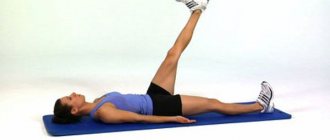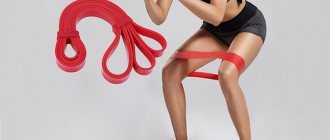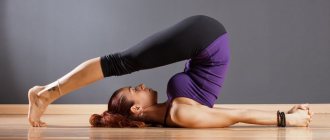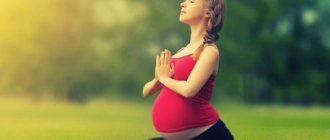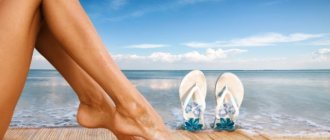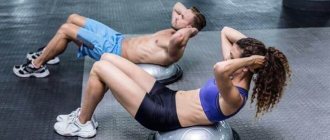Today every schoolchild knows what general physical training is. Physical education lessons, in addition to teaching entertaining sports games, are designed to develop children's capabilities. For this purpose, general physical training is used. It is not only part of the school curriculum. General physical training is mandatory for professional athletes. It is also indispensable for adherents of a healthy lifestyle. Let's get acquainted with the goals, the main set of physical fitness exercises and age standards.
Bodyweight squats
What muscles are involved : quadriceps, gluteals, hamstrings.
Starting position : feet shoulder-width apart, back straight, arms bent at the elbows in front of you at chest level.
Execution technique : perform a squat, moving your pelvis back as if you want to sit on an invisible chair. Try to keep your knees stationary and lower yourself until your thighs are parallel to the floor, then slowly rise up. Make sure that your knees do not extend beyond your toes. Do 12-20 reps in one set.
General physical training (GPP)
- Articles
- Training methods
- General physical training (GPP)
Facebook
Author : Alexander Shooter.
In this article I will briefly describe the principles of general physical training using the example of working with your own weight. The article is intended mainly for beginners.
I get asked questions quite often - write me a training program for a week (month), whether in running or strength exercises. In general, creating programs remotely is not a rewarding task. Everyone’s body is different, and one scheme will suit some people, but this scheme will not suit others. You need to personally monitor the progress of your training and the results. But I will describe the basic principles of training.
Again, it all starts with the goal, why do you need general physical training? Do you want to become stronger physically? Do you want to do a certain number of pull-ups and push-ups? Do you need to take PHYS tests? Or make the body sculpted? All these points are closely interconnected. But specifically here I will describe a scheme for improving the result, that is, increasing the number of times the exercise is performed.
Let's consider basic exercises with your own weight - pull-ups on the bar, push-ups, squats (jumping), press lying on your back, exercise for the back muscles. This is the minimum necessary base to maintain your body in good shape. The rest is optional.
We will not consider iron, since this is a specific type of strength load and there is a higher risk of injury than anywhere else, so it is better to do iron with a knowledgeable trainer in the gym, who will correctly vary the load and technique.
The most important element for improving results in any physical activity is recovery, that is, rest. Yes, yes, the body becomes stronger not during the exercise, but in the following days. The body experiences stress, micro muscle tears occur, the body begins to rebuild and prepare for the next load. That is why the number of training days per week is purely individual. There's no point in training if you haven't had time to recover. Ideally, you should come to each training session fresh, feeling energetic and willing to perform physical activity. This is an indicator that the body has recovered and is ready to digest a new portion of stress. Of course, I don’t take into account depression, lack of sleep, etc., when you just can’t go to train :). If you perform the same exercises almost to the maximum every workout, then you need proper rest. Personally, I only need 2 strength training sessions per week to improve my results. But in my case there are other physical trainings. Thus, when performing a standard set of exercises - push-ups, pull-ups, squats, abs, back, I need 2-3 days to recover. You can do it more often, but there is no point if the result is growing anyway. I have seen cases where people stupidly try to train almost every day, but the results remain stagnant. Remember - no matter how many days a week you train, it is important to have time to recover. Only after realizing the importance of rest did I see results in both general physical fitness and running. It's a different matter if you break the exercises down into muscle groups. For example, PN - arms (bench press), SR - abs, back (dead), PT - squat (squat with a load). In this case, you can increase the number of times per week.
Now regarding the training itself. There are 2 main schemes for performing strength exercises - the “ladder” and the “repeated circular method”. They are well known to everyone. Ladder, for example in pull-ups - 1, 2, 3, 4, 5, 6, 6, 5, 4, 3, 2, 1. In this case, we reach 6. The maximum number depends on the specific training of the athlete and can range from 3 up to 10 or more. This is a good game type, great to do with a colleague as a couple. The second option is repeated, where we break the exercise into series and determine the number of repetitions in the series. For example, for the test I can do 25 pull-ups per set, but it will be physically and emotionally difficult. We divide the series into approaches, for example 4-5 10 times, or 3-4 15 times (respectively, the sum is 40-50 times and 45-60 times). By doing the total amount in excess, in this case about 40-50 times, we accustom the body to overload. And in the future, when approaching the maximum number of times, it will be easier for me to do these 25 times. Periodically you need to check and push yourself to the maximum. With this scheme, after 2-4 weeks you will always pull up several times more. Then you can increase the number of approaches, while strength endurance will be developed. If you increase the number of times in the approach itself, for example not 15 times, but 18 times, then the strength will directly increase. After a series of pull-ups, I go to the press, then push-ups, squats, back and then the second round. This is circuit training. Circuit training can be intense when the exercises are done without a break to develop special endurance, and only a short rest between the circuits (the same as CrossFit). But personally, I take a short rest between each exercise and focus on the technique. I build up special endurance by running and skiing.
During training, when performing extreme approaches, the muscles should burn a little, this means that “work” is in progress, but the muscles should not be overloaded. One day I was playing “ladder” and pushed my body too hard. There was also a break in training. As a result, my hands hurt badly for probably a month and the results generally dropped for several months. Therefore, after training, the muscles should be tired, but it should be pleasant fatigue. You should never work 100% - we are not professionals, nothing good will happen with this approach. 90% of the maximum is optimal.
Now let's look at an approximate training plan for a week using my example. From this you can build your plan:
First, of course, warm up by running for 10-15 minutes, then stretching for 3-5 minutes. Next circle:
- pull-ups 15 times;
- press - 50 times;
- push-ups 50 times;
- squats 50 times;
- spin 50 times;
And so on for 3-4 laps. The number of repetitions is individual and also depends on the current form. For example, after a long break, I do a series of pull-ups 10 times, the rest of the exercises 30, instead of 50. Then I get back to normal. And after a couple of months I can increase the pull-ups, for example, to 20, the press to 100, etc. I can do it.
There is no point in endlessly increasing the number of repetitions. Personally, I set a bar for myself and if I meet it, then everything is fine. My level is pull-ups 25 times, presses, push-ups and squats 100 times. It’s possible to go further, but I don’t see the point for myself. I don’t work on relief, my goal is physical strength and general body tone, plus passing work standards. Such results come after several months of regular training according to the above scheme. In each individual case, it will naturally change a little, the main thing is to understand the principle. But my results are a consequence of many years of training. If you start from scratch, of course you need to take a low bar and greatly reduce the number of times in the approach.
The scheme is simple, but working. The main thing is not to forget about the required things:
- smoothness - we gradually increase the load and listen to the body;
- regularity. Only regular training gives results. A week of absenteeism forgives the body, but after that the result will decline;
- daily routine - proper sleep and nutrition are a must;
- periodically do a mini-assessment. For example, once a month, you need to do each type to the maximum and adjust the program based on the results. This is the only way to really check whether the result is growing or not.
- if you feel light, then you can increase the load or increase the number of workouts per week.
- give the body recovery.
The list can go on, but this is the main thing.
The same scheme, in principle, applies to working with weights with minor modifications, but for certain reasons I do not give recommendations for working with iron.
Remember, we play sports to gain health, not to lose it and get injured.
Good luck with your training!
Exercise "Speed Skater"
What muscles are involved : quadriceps, gluteals, hamstrings, calves, abs.
Starting position : feet shoulder-width apart, back straight, arms at your sides.
Technique: Take a wide step back with your right foot and cross it behind your left leg so that they are crossed with each other. With a jumping movement, change the position of your legs to the opposite - the right leg is the supporting leg, the left leg goes back behind the right. The arms move in the same direction as the change of legs. Do 10-12 jumps on each leg.
Recommendations for performing general physical training: the best time for training
It is preferable to train every time before starting a run. In this case, in addition to all the other benefits of general physical fitness, the body will be sufficiently warmed up and completely ready to run, which will significantly reduce the likelihood of subsequent muscle soreness after long runs.
General physical training is recommended to be performed at any time of the year. During the warm season, it is advisable to do these exercises in the fresh air, and running itself will be much more useful and enjoyable in the open space.
It is important to remember that the best effect from these exercises can only be achieved through regular training. The optimal amount of general physical training for an average runner is about 4 times a week, if running classes are held 3 times a week. Accordingly, for each day of running there should be one general physical training event plus one free day on which general physical fitness training would be carried out without subsequent running practice. This will help keep the body and muscle corset in good shape, reducing the likelihood of muscle strain.
As a harmonious, balanced scheme for the gradual development and strengthening of the entire body as a whole, this workout will be useful for both professional runners and beginners. Therefore, it is strongly recommended to include general physical fitness classes in your training plan for all people interested in and involved in any sport, without exception, and this is especially true for running. The age and gender of the athletes do not matter. The only thing you should pay close attention to when drawing up a general physical training plan is the individual characteristics of the body and the athlete’s well-being.
Important! Before starting general physical training, it is recommended to consult a specialist, especially if you have any diseases.
Squat Jumps
What muscles are involved : quadriceps, gluteals, hamstrings, calves.
Starting position : feet shoulder-width apart, back straight, arms down along the body, look ahead.
Execution technique : smoothly move your pelvis back and perform a squat until it is parallel to the floor, then with a sharp explosive movement, pushing through your heels, jump up as high as possible. Do 10-15 jumps.
Long jump
What muscles are involved : quadriceps, hamstrings, calves.
Starting position : feet shoulder-width apart, arms at your sides, back straight, look ahead.
Execution technique : bend at the waist, simultaneously bending your knees and moving your arms back, then push powerfully through your toes and jump forward. Do 8-10 jumps.
Bird-dog exercise
What muscles are involved : gluteal muscles, hamstring muscles, abs.
Starting position : get on all fours, knees perpendicular to the floor, hands opposite your shoulders, back straight.
Technique: straining your abdominal muscles and buttocks, simultaneously move your left leg back and extend your right arm forward.
At the top, your arm and thigh should be parallel to the floor, and your leg should be bent at the knee at an angle of 90 degrees. Pause briefly, then smoothly and under control return to the starting position and perform the same movement on the other side. Do 10-12 reps on each side.
How to build sets of exercises?
The basis of general physical training can be any sport (athletics, swimming, martial arts, outdoor games, etc.). It is important to remember when constructing sets of general physical fitness exercises that this kind of program is aimed at the harmonious development of physical skills. Narrow specialization must be eliminated. For example, you cannot intensively develop strength at the expense of flexibility or speed at the expense of strength.
General physical fitness exercises differ in category, method of execution and area of influence. It makes more sense to start with simple ones and gradually move on to complex ones. To get started, you can take one simple exercise from each category. And during the first month, increase the number of repetitions and approaches. This will allow you to smoothly and correctly change the vector of load on the body and prepare yourself for the next level.
Single leg squats (“pistol squats”)
What muscles are involved : quadriceps, gluteals, hamstrings, calves, abs
Starting position : feet shoulder-width apart, back straight, gaze directed forward.
Execution technique : while maintaining balance with your hands, raise your extended left leg as high as possible.
Moving your pelvis back, lower yourself down on your right leg until your thigh is parallel to the floor, while trying to keep the knee of your right leg from going beyond the level of your toe. Do 6-8 squats and change legs.
Goals
General physical training is aimed at developing human strength, endurance, flexibility, agility and speed. In addition, do not forget that any physical activity improves health. General physical fitness has a positive effect on the body at the molecular level. It significantly improves physiological and biochemical processes. The body becomes more resistant to negative influences, immunity increases, and the aging process slows down.
When wondering what general physical training is, many perceive it as a sport. But this is not entirely true. Ensuring the comprehensive development of a person, general physical training is the basis for special physical training.
Lunges
What muscles are involved: quadriceps, glutes, hamstrings.
Starting position: feet shoulder-width apart, back straight, arms at your sides.
Technique: Take a step forward with your right foot and lower yourself down until the knee of your left foot lightly touches the floor. Make sure that the knee of the supporting leg does not extend beyond the level of the toe/forefoot. Change legs and repeat the movement. Do 10-12 reps on each side.
Calf raise
What muscles are involved: calf muscles, foot muscles.
Starting position: stand on your right leg. If necessary, use support to maintain balance. Get into a running position with your hip lifted and your left knee slightly bent.
Technique : Tightening your calf muscles and leaning on the front of your foot, lift your heel as high as possible. At the top point, take a short pause and smoothly lower down. Change legs and repeat the movement. Do 15-20 times on each side.
Jumping up while standing on one leg
What muscles are involved : calf muscles, foot muscles.
Starting position: stand on your right leg. Get into a running position with your hip lifted and your left knee slightly bent.
Technique : While maintaining balance, push off with the front of your foot and jump up. Try not to land on your heel. To better engage your foot muscles, perform the exercise without shoes. Do 10-12 reps on each side.
Side plank
What muscles are involved : core muscles
Starting position : Lie on your side, extend your right arm and rest your forearm on the floor. The legs are one on top of the other. The left arm is bent at the elbow and placed on the side.
Technique: Leaning on your elbow, lift your hips and pelvis so that your body forms a straight line. Tightening your abdominal muscles, try to hold this position for 30-90 seconds. Switch hands and repeat the movement on the other side.
Home training program for girls
An unfit body, health problems and even depression are all consequences of an inactive daily routine. Sport has its advantages:
- You strengthen your immunity.
- Correcting your figure.
- Make your body elastic.
- Normalize your sleep.
- Charge yourself with positivity.
To keep your body in good shape, you don't have to go to the gym. Most exercises can be performed at home using a minimum amount of equipment. The most important and key factor will be your desire and motivation - to become better and prolong your youth.
We will create a training program for girls, designed for a week, with the help of which we can quickly achieve the desired result. Classes will be intensive and regular.
Plank
What muscles are involved : core muscles
Starting position : lie on the floor. Using your elbows and toes, lift your torso up.
Technique: Straining your abdominal muscles, hold this position for 30-90 seconds. Try not to arch at the lower back.
General physical fitness exercises for runners in winter
For every serious running enthusiast, it is important to never stop improving yourself and training. Therefore, in the conditions of our country, it is necessary to somehow continue general physical fitness training during the winter months. An advantage of general training will be the opportunity to conduct a lesson even in the yard of your home.
Consider a list of specific exercises in winter:
- Squats . This universal activity can be done in any convenient place. The main condition is a stable surface underfoot. This makes the squat great for winter training.
- Lunges . An alternative to squats, do them while moving - this way you will develop more endurance. An excellent option for lunges is Bulgarian, which is performed alternately on each leg separately.
- Push ups . A high-intensity exercise that also does not require special conditions for execution. You can practice push-ups from behind.
- Pull-ups . A horizontal bar can be found in literally every yard. Pull-ups involve a large group: lats, biceps, back muscles. This will not only help with running, but will also help release a large amount of testosterone into the body.
- Hanging leg raise . If you find a bar, take care of the abdominal cavity. A great workout for your abs, quads and core muscles. Choose between straight legs and bent legs according to the load.
- Hanging oblique crunches . Variation of the previous exercise.
- Jumping on your toes . The complex perfectly develops the calf. Important for those who want to be less tired when running cross-country.
- Swing jumps . This is where the shoulders come into play. Good aerobic exercise.
- Stand on one leg or “pistol” . Another coordination exercise. If it is difficult to perform without support, do it next to a wall or leaning on something.
- High jump . Increases explosive muscle strength. Particularly suitable for short distance runners - sprinters. Variation - jumping with legs pulled to the chest.
Exercise "shell"
What muscles are involved: muscles of the inner and back surface of the thigh.
Starting position: lean on your left elbow and lie on your side, bend your knees and place them on top of each other.
Technique: straining your thigh muscles, lift your right knee as high as possible, while keeping your feet pressed together, then smoothly return to the starting position. To make the exercise more challenging, wrap an elastic band/band around your knees. Do 10-12 reps on each side.
Hitch
If a warm-up is necessary to warm up the body before general physical fitness training, then it is recommended to properly “cool down” after it. This is what the cool-down is for. The intensity of the exercises increases your breathing and heart rate. If you stop abruptly after finishing your workout, you may experience nausea and dizziness. This is due to the fact that blood, which is in large quantities in the muscles, does not have time to reach the internal organs. A cool-down allows you to smooth out the transition to rest after general physical training.
What is the load on the heart muscle can be felt precisely by ignoring this component of the program. After all, in the process, blood pressure normalizes and overall body temperature decreases. Cooling down also helps reduce post-workout pain and aches and helps to better restore strength.
This part of the general physical training program includes two phases. At the first stage, the athlete needs to gradually bring his pulse and breathing back to normal. To do this, it is recommended to gradually stop the exercises and reduce the rhythm.
In the second phase, stretching of the muscles occurs, the training of which was aimed at by a set of general physical training exercises. This helps to remove metabolic products and normalize local blood flow. Also, stretching hot muscles makes them more flexible and elastic.
It is better to do the cool-down smoothly without jerking or pain. It is recommended to hold the muscle tension for 20-40 seconds.
Cool-down exercises include smoothly pulling your head in different directions with your hands, bending your legs in turn (while standing, the heel touches the buttocks), a fold (bending towards your legs while sitting on the floor), twisting the spine while lying on the floor, stretching the shoulder joints, etc. .
Side steps on bent legs
What muscles are involved : quadriceps, muscles of the inner and posterior thighs, gluteals.
Starting position : legs shoulder-width apart and slightly bent, tilt your body slightly forward, move your pelvis slightly back, straight back, arms bent at the elbows in front of you.
Technique: keeping your legs bent, take a step with your right foot as far as possible, then place your left foot at the same distance. To make the exercise more challenging, tie an elastic band/elastic band around your knees at shin level. Take 20-25 steps in each direction.
Physical fitness for long-distance runners
To run long distances, athletes need to have tremendous endurance. Marathon runners develop it not only by daily runs of tens of kilometers, but also by a set of exercises for general development. Some types of tasks in a few minutes also affect endurance, like running a 5 kilometer. Here are examples of specific exercises for long-distance cross-country:
- Burpee . Push-ups followed by jumping are recognized by many experts as the most energy-consuming. By doing burpees, you will not only increase your endurance, but also strengthen your legs, arms, chest and back.
- Squats . Performed with your own weight or weights. The exercise uses almost every possible muscle in the legs. Moreover, it can be performed in several modes: statically, dynamically and statically.
- Plank . The well-known stance is great for strengthening the abs, stabilizers and increasing endurance. A few minutes of planking every day will significantly improve your marathon performance. Just don’t forget to add different variations to the classic plank, for example, pulling your legs to your chest or a side plank.
- Hyperextension . Strengthens the back and abdominal muscles. This helps support the body and not get tired when running for a long time.
- Press crunches . Standard general physical training class for marathon runners. Develops abdominal muscle tissue and protects the back from injury.
- Single leg squats or long jumps . This complex is used to pump up the stabilizers of the legs, and with them the coordination of movements. An important point for long crosses.
- Gluteal bridge . Helps you feel your buttocks and thighs and put them into work. There are several variations of this exercise. And as you train, you can diversify the usual gluteal bridge.
- Raising on your toes . Calf training is an important detail for a marathon runner. When jogging for tens of kilometers, this group is used one hundred percent. At the same time, many athletes neglect training their calves.

